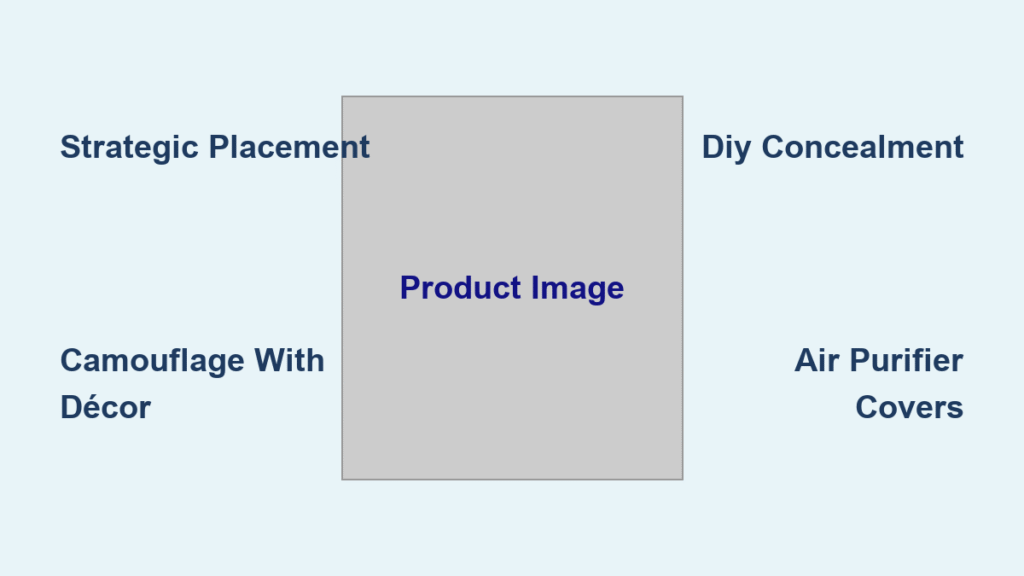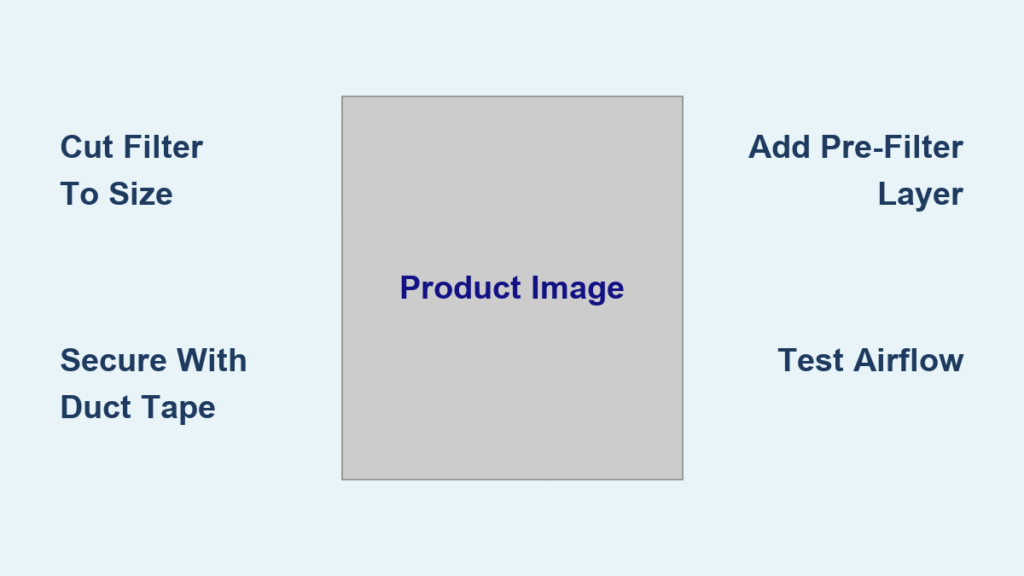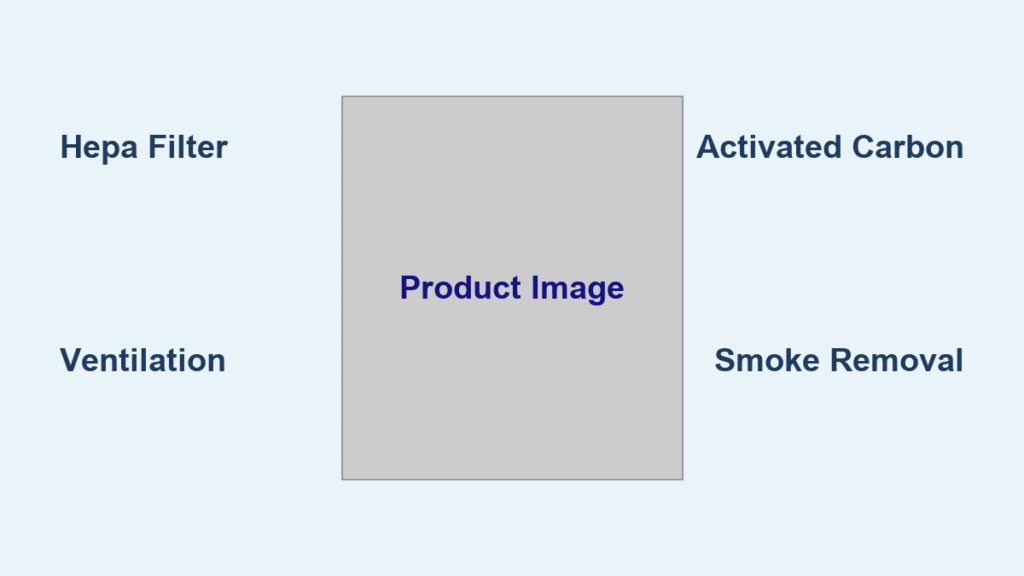That persistent, dry cough keeping you up at night? A humidifier might be your best ally. When winter air turns your home into a desert or seasonal allergies leave your throat raw, proper humidifier use can transform thick, sticky mucus into easily expelled secretions while soothing irritated airways. This guide reveals exactly how to harness your humidifier’s therapeutic potential—whether you’re battling a stubborn cold, managing chronic cough, or simply seeking better sleep during dry seasons.
Why Humidifiers Stop Coughing
Dry air thickens mucus into stubborn plugs that trigger endless coughing fits. Humidifiers combat this by flooding your airways with therapeutic moisture, transforming thick secretions into thin, manageable fluids your body can clear naturally.
Mucus Thinning Process
When humidity drops below 30%, mucus transforms from thin fluid into sticky gel. This thickened mucus clings to throat tissues, triggering cough reflexes as your body struggles to expel it. Proper humidification reverses this process within hours:
- Immediate relief: Moist air begins thinning mucus within 30 minutes
- Easier expectoration: Thinned mucus moves naturally through airways
- Reduced irritation: Less sticky mucus means fewer cough triggers
Your body’s natural defense mechanism works better when mucus flows freely. Without adequate moisture, your respiratory system becomes overwhelmed, causing that frustrating dry, hacking cough that won’t quit.
Tissue Hydration Benefits
Moist air acts like internal lotion for your respiratory tract. This hydration:
- Soothes inflamed throat tissues
- Reduces airway sensitivity
- Minimizes cough reflex activation
- Creates protective moisture barrier against irritants
Imagine your throat as delicate tissue paper—dry air makes it brittle and prone to damage. Proper humidification keeps these tissues supple and resilient, preventing the raw, scratchy feeling that triggers constant coughing.
Clinical Evidence
The CDC specifically recommends cool-mist humidifiers for cough relief, noting their proven effectiveness in loosening mucus. Pediatricians routinely suggest nighttime humidifier use for children with respiratory infections, as cough symptoms intensify during sleep. While research presents mixed results for all individuals, the physiological mechanism is well-established—proper humidity directly addresses the root cause of many coughs.
Choose Your Cough-Fighting Humidifier
:max_bytes(150000):strip_icc()/humidifiers-ultrasonic-vs-evaporative-humidifiers-1908160-final-5c93ceaa4cedfd0001f1695a.png)
Selecting the wrong humidifier type can worsen symptoms or create safety hazards. Understanding your options ensures optimal cough relief without introducing new problems.
Cool Mist Advantages
Ultrasonic models use high-frequency vibrations to create fine mist without heat:
- Zero burn risk for children
- Energy-efficient operation
- Recommended by pediatricians
- Effective for all cough types
Evaporative models use fans to blow air through wet wicks:
- Self-regulating humidity output
- Filter airborne particles
- Slightly noisier operation
- Requires regular filter changes
For most households seeking cough relief, ultrasonic cool-mist humidifiers provide the ideal balance of effectiveness and safety. Their quiet operation won’t disturb your sleep while delivering therapeutic moisture.
Warm Mist Considerations
Steam vaporizers heat water to create therapeutic steam:
- Provides soothing warmth for sinus congestion
- Higher energy consumption
- Significant burn risk around children
- Requires careful positioning away from beds
While warm mist feels comforting during winter, the safety risks often outweigh benefits for cough relief. Reserve warm mist humidifiers for situations where you’re certain children won’t be exposed.
Setup Your Humidifier Correctly
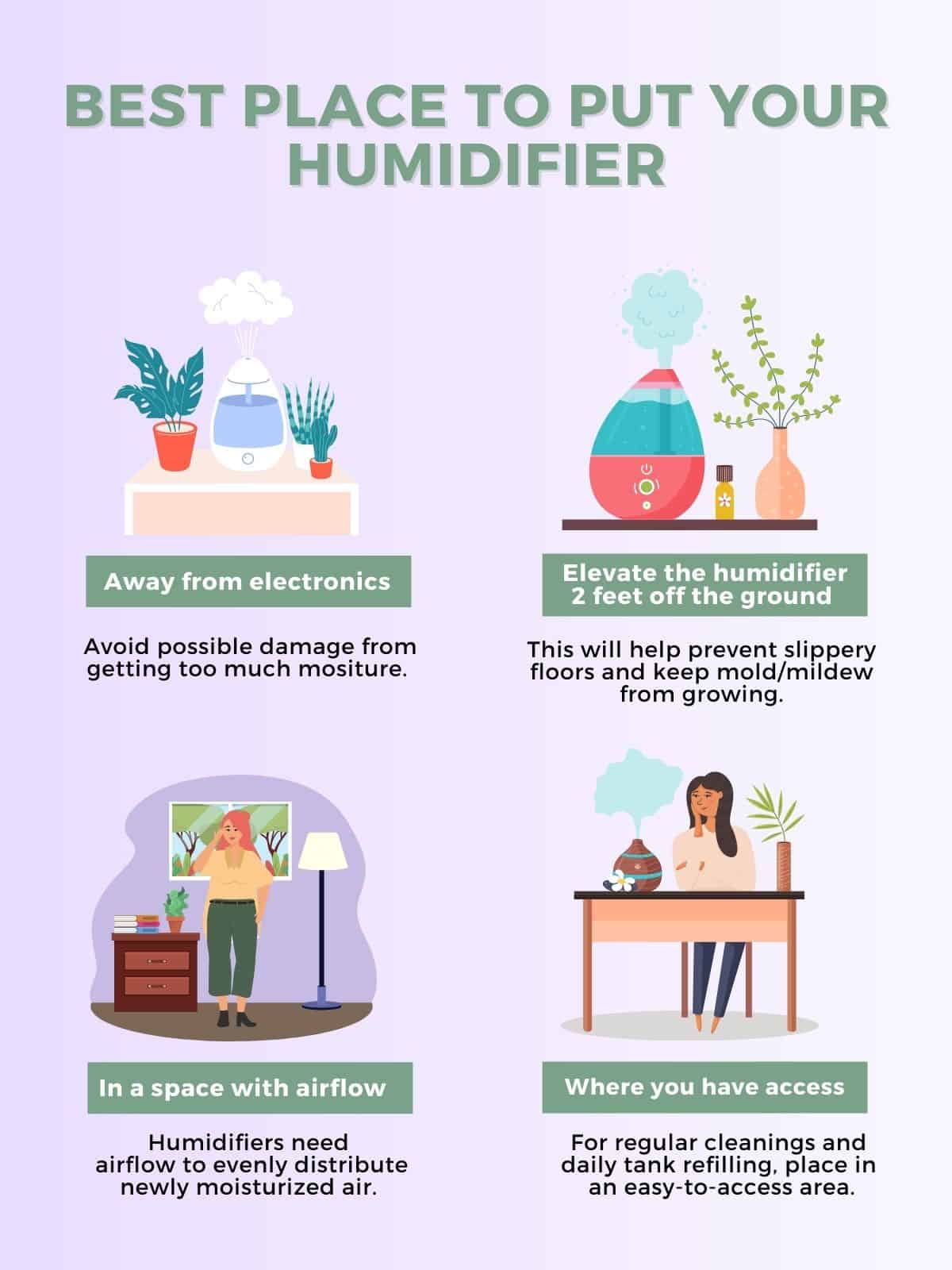
Proper positioning and setup determine whether your humidifier helps or harms your cough recovery. Many users unknowingly reduce effectiveness through simple placement mistakes.
Ideal Room Placement
Position your humidifier 3-6 feet from your bed or primary seating area. This distance prevents:
- Over-humidification directly around your face
- Condensation on bedding or furniture
- Mold growth in localized areas
Height matters: Place the unit on a stable, elevated surface (nightstand height) for even moisture distribution. Never place directly on carpet, which absorbs moisture and breeds mold.
Water Quality Essentials
Use only distilled water to prevent:
- Mineral deposits coating your humidifier
- White dust particles in your breathing air
- Bacterial growth from tap water contaminants
Never use tap water—the minerals create deposits that harbor bacteria and reduce effectiveness. This single mistake transforms your cough remedy into a potential health hazard.
Humidity Level Targets
Maintain 40-50% humidity for cough relief:
- Below 30%: Ineffective for mucus thinning
- Above 50%: Promotes dust mites and mold
- Sweet spot: 45% provides maximum cough relief without risks
Quick test: If windows fog or condensation appears, humidity is too high. Invest in an inexpensive hygrometer to monitor levels accurately.
Daily Operation Protocol
Following a structured daily routine maximizes cough relief while preventing humidifier-related health issues. Consistency is key—sporadic use delivers inconsistent results.
Morning Routine
- Empty tank completely to prevent overnight bacterial growth
- Rinse with distilled water to remove any residue
- Refill with fresh distilled water for optimal performance
- Check humidity levels with hygrometer
Skipping morning maintenance allows bacteria to multiply in stagnant water, potentially worsening your cough with each use.
Evening Setup
- Position unit 3-6 feet from bed
- Fill to appropriate level for 6-8 hours of operation
- Set humidity target to 45%
- Test operation 30 minutes before bedtime
This pre-sleep testing ensures your humidifier is working properly and humidity levels are optimal before you settle in for the night.
Nighttime Settings
- Run continuously throughout sleep
- Medium output prevents over-humidification
- Direct airflow away from face
- Monitor for condensation on windows
Continuous operation maintains therapeutic humidity levels all night, when cough symptoms typically worsen due to lying flat and dry indoor air.
Deep Cleaning Schedule
Neglected humidifiers become breeding grounds for bacteria and mold that worsen cough symptoms. Regular cleaning isn’t optional—it’s essential for safety and effectiveness.
Weekly Deep Clean
Step 1: Unplug and disassemble completely
Step 2: Fill tank with equal parts white vinegar and water
Step 3: Let soak 30 minutes to dissolve mineral deposits
Step 4: Scrub all surfaces with soft brush
Step 5: Rinse thoroughly with distilled water
Step 6: Air-dry completely before reassembly
This simple routine prevents the buildup that turns your cough remedy into a health hazard. Never skip this critical maintenance step.
Monthly Sanitization
For thorough sanitization:
– Use 3% hydrogen peroxide solution
– Soak all parts for 10 minutes
– Rinse twice with distilled water
– Replace filters if applicable
Monthly sanitization eliminates stubborn bacteria that regular cleaning might miss, ensuring your humidifier remains a healing tool rather than a contamination source.
Safety Guidelines for Vulnerable Users

Certain populations require extra precautions when using humidifiers for cough relief. What works for healthy adults might pose risks for others.
Children and Infants
- Only cool-mist models to prevent burns
- Position out of reach from curious hands
- Monitor closely for any adverse reactions
- Clean daily due to higher contamination risk
Pediatricians strongly recommend cool-mist humidifiers for children, as warm-mist models present serious burn risks. For infants with coughs, consult your pediatrician before use.
When Cough Requires Medical Care
While humidifiers provide excellent symptom relief, certain situations demand professional medical attention.
Red Flag Symptoms
Seek immediate care if you experience:
– Cough lasting longer than 3 weeks
– Worsening symptoms despite humidifier use
– Fever above 101°F with cough
– Green or bloody mucus production
– Difficulty breathing or chest pain
Humidifiers complement medical treatment but don’t replace it. Discontinue use and seek medical advice if symptoms worsen or persist beyond expected recovery time.
Seasonal Optimization Strategies
Adjust your humidifier strategy based on environmental conditions that trigger coughs. One-size-fits-all approaches deliver subpar results.
Winter Protocol
Heating systems create extreme dryness:
– Increase daily operation to 8-12 hours
– Monitor humidity more frequently as levels fluctuate
– Use larger capacity models for bigger spaces
– Combine with nasal saline for enhanced relief
Winter coughs respond best to consistent humidity management, as indoor heating systems dramatically reduce natural moisture levels.
Allergy Season Modifications
When pollen triggers coughs:
– Reduce humidity to 35-40% to limit dust mites
– Increase cleaning frequency to daily
– Use filtered models to remove allergens
– Position away from windows to avoid pollen intake
Allergy-related coughs require careful humidity balancing—too dry irritates airways, while too humid encourages dust mite proliferation.
Combine With Other Cough Remedies
Humidifiers work best as part of comprehensive cough management strategies. They’re most effective when integrated with complementary approaches.
Compatible Treatments
- Hydration therapy: Increase water intake alongside humidifier use
- Saline nasal sprays: Enhance mucus thinning effects
- Honey and herbal teas: Provide throat coating between humidifier sessions
- Elevation during sleep: Combine with humidifier for nighttime cough control
These approaches work synergistically—while the humidifier addresses environmental dryness, other treatments target specific cough mechanisms.
Remember: Humidifiers enhance—but don’t replace—medical treatment for underlying cough causes. Always consult your healthcare provider for persistent symptoms.
Key Takeaway: Using a humidifier for cough relief requires more than simply turning it on. Success depends on proper setup, consistent maintenance, and careful monitoring. Start with distilled water, maintain 45% humidity, clean daily, and seek medical care for persistent symptoms. When used correctly, your humidifier becomes a powerful ally against stubborn coughs, providing natural relief without medication side effects. The difference between a cough remedy and a health hazard lies in your daily maintenance routine—make it a non-negotiable part of your recovery process.


